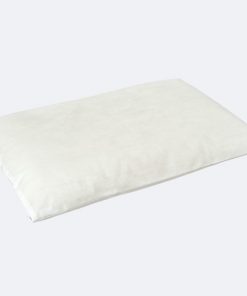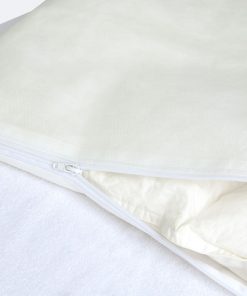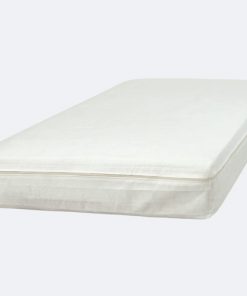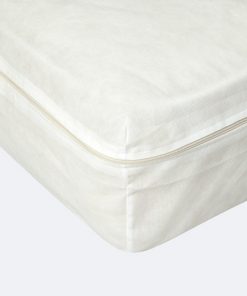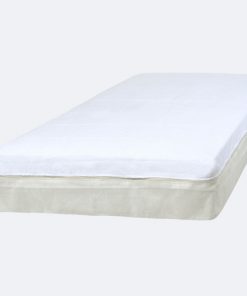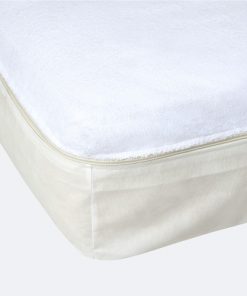Dust mites
Eliminate dust mites with deep cleaning
Dust mites are microscopic arachnids that thrive in domestic environments, feeding on desquamated human skin cells. Despite their invisibility to the naked eye, they can have a significant impact on indoor air quality and health, especially for those with allergies or asthma. Fortunately, there are effective strategies to reduce their presence and minimize health risks. This article explores deep cleaning methods and preventive measures to keep your home free of dust mites.
Sommario
Maintain high tissue hygiene
Dust mites find home environments an ideal place to thrive, especially in fabrics such as mattresses, pillows, curtains and carpets. These microscopic arachnids feed on the dead skin cells we lose daily, and their presence can aggravate allergies and respiratory problems. This is why maintaining high hygiene of textiles in the home is critical to limit their proliferation. Below are some effective strategies to reduce the presence of dust mites through proper management of household textiles.
Regular washing
- Bedding: wash sheets, pillowcases and blankets in hot water (at least 60°C) every week to kill dust mites and remove allergens. For items that cannot be washed frequently, such as comforters and heavy blankets, consider using mite-proof covers and wash them according to the manufacturer’s directions.
- Soft toys and cloth toys: If you have children in the house, don’t forget to wash their cloth toys regularly as well, following the same guidelines as bedding.
Use of mite-proof covers
- Mattresses and pillows: use mite-proof mattress covers and pillowcases specifically designed to seal the mattress and pillows, preventing mites from entering and accumulating inside. These covers are made of tightly woven fabrics that do not allow mites and their allergens to pass through.
Anti-mite
Anti-mite
Anti-mite
Suction and steam cleaning
- Carpets and rugs: vacuum carpets and rugs regularly using a vacuum cleaner equipped with a HEPA filter to capture dust mites. Also consider periodic steam cleaning, which can kill mites due to high temperatures.
- Curtains and other furnishing fabrics: gently vacuum curtains and other furnishing fabrics with the upholstery attachment of the vacuum cleaner. For curtains and washable fabrics, follow the washing instructions and prefer hot water whenever possible.
Moisture reduction
Dust mites thrive in humid environments, so keeping the relative humidity in the home below 50 percent can significantly limit their growth. Use dehumidifiers in the wettest areas of the house, and make sure bathrooms and kitchens are well ventilated.
Adopting these practices will not only help reduce the population of dust mites in your home, but will also improve indoor air quality, reducing the risk of allergies and respiratory problems for you and your family. Remember that prevention is key-a proactive approach to cleaning and maintaining textiles can make a big difference in keeping your home healthy and comfortable.
Using vacuum cleaners with HEPA filters
Combating dust mites requires a multifactorial approach, and one of the most effective tools at our disposal is a vacuum cleaner equipped with HEPA (High Efficiency Particulate Air) filters. These filters are designed to capture extremely small particles, including dust mites and their allergens, making them an indispensable ally in keeping your home clean and healthy. Let’s take a closer look at how using vacuum cleaners with HEPA filters can significantly contribute to the reduction of dust mites in the home.
What are HEPA filters?
HEPA filters are capable of retaining at least 99.97% of particles larger than 0.3 microns in size, making them extremely effective in capturing dust mites, their excrement, and other allergens in the air in the home. This filtering capability ensures that the air expelled by the vacuum cleaner is clean and free of allergens, unlike conventional vacuum cleaners that can release these particles back into the environment.
Why choose vacuum cleaners with HEPA filters?
- Allergen reduction: by using a HEPA-filtered vacuum cleaner, you can significantly reduce the amount of allergens in furniture fabrics, floors and other surfaces in your home, helping to create a healthier environment for you and your family.
- Improved air quality: in addition to physically removing dust mites, the use of these vacuum cleaners helps improve indoor air quality, reducing the risk of allergic reactions and respiratory problems.
- Versatility: many vacuum cleaners with HEPA filters are designed to be used on a variety of surfaces, including carpets, hard floors, furniture and even curtains, offering a complete home cleaning solution.
Recommendations for use
- Regular cleaning: to maximize effectiveness in combating dust mites, it is important to vacuum regularly, at least once a week, paying special attention to areas where dust mites tend to accumulate, such as mattresses, sofas and carpets.
- Filter maintenance: check and replace HEPA filters according to the manufacturer’s directions to ensure that the vacuum cleaner maintains its effectiveness over time. A clogged filter can reduce the performance of the vacuum cleaner and its ability to capture allergens.
- Emptying and cleaning: empty the container or change the vacuum cleaner bag outdoors to prevent captured allergens from being released into the air of your home. Clean the unit and its accessories regularly to maintain high efficiency.
Adopting a vacuum cleaner with HEPA filters is a key step in creating a healthier home environment, free of dust mites and their allergens. By integrating this tool into an overall cleaning strategy, which includes regular fabric washing and humidity control, you can significantly improve the air quality in your home and protect the health of those living there.
Reduce indoor humidity
Regular cleaning and ventilation
Airing home environments regularly can help reduce the concentration of dust mites. Opening windows and doors to allow air exchange, especially on sunny and windy days, can significantly improve indoor air quality. In addition, frequently wiping hard surfaces such as floors, furniture, and countertops with damp cloths or microfiber can reduce dust accumulation.
Choose furniture and decorations that are easy to clean
Preferring furniture and decorations that are easy to clean and less likely to collect dust can make a big difference. Choose hard floors instead of carpeting, use light curtains or blinds that are easy to wash, and limit the use of heavy fabrics and plush that can trap dust and allergens.
Check and clean ventilation systems
Heating, ventilation and air conditioning (HVAC) systems can accumulate dust and distribute dust mites throughout the home. Make sure these systems are regularly inspected and cleaned, and replace filters according to the manufacturer’s recommendations to maintain good air quality.
Adopt a conscious cleaning routine
Finally, developing a conscious and regular cleaning routine is critical. Spend time each week to thoroughly clean areas that might be overlooked, such as under furniture, behind appliances, and inside drawers.
Fighting dust mites requires commitment and perseverance, but with the right strategies, you can create a healthier and more comfortable home environment. Supplementing deep cleaning with the use of specific products such as mite-proof bedding can offer an additional layer of protection, significantly helping to improve the quality of life for allergy or asthma sufferers.

